The MSI MEG Ai1300P PCIE5 1300W PSU Review: The ATX 3.0 Era Has Begun
by E. Fylladitakis on December 8, 2022 11:00 AM EST- Posted in
- Cases/Cooling/PSUs
- PSUs
- MSI
- PCIe 5.0
- ATX v3.0
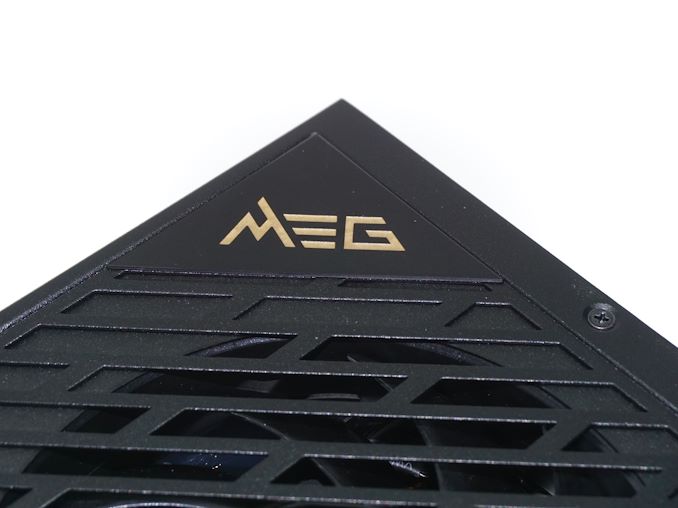
Just under a year since the specification was first announced, the ATX 3.0 era for power supplies is now underway. The updated version of the Intel-maintained specification introduced several notable changes to PC power supply designs, most notably the introduction of the 600 Watt-capable 12VHPWR connector and associated cabling. Altogether, ATX 3.0 is designed to lay the groundwork for future video cards (and other high-powered accelerators) by providing for a single-cable power connection that can better accommodate the high total and rapid shifts in power consumption a video card can undergo.
The biggest change since the addition of the 12V 6-pin “PCIe” power connector in the late 00s, the ATX 3.0 era has come with some new opportunities, both for computing products and for computing problems. The use of adapters has, in short, not gone well for front-runner NVIDIA, with a small but serious number of incidents of 12VHPWR adapters melting down. Meanwhile on the power supply side of matters, this has been a not-unwelcome boon; not only are native ATX 3.0 power supplies the preferred way to go from a design standpoint, but the adapter problems have helped to underscore this advantage. So for the power supply vendors who are among the first to get their ATX 3.0 designs out the door, there’s no shortage of demand for their latest and greatest wares, as well as a fresh opportunity to innovate and set themselves apart from the competition.
In today’s review, we are taking a look at our first ATX 3.0 power supply – and indeed, among the world’s first: the MSI MEG Ai1300P PCIE5. A beefy, 1300W PSU that is designed to be fully compliant with the ATX 3.0 specification, the Ai1300P is a look at what’s to come for the future of high-end PC PSUs, as the market slowly-but-inevitably incorporates ATX 3.0 compliance in order to feed ever more power-hungry video cards and other PCIe devices.
MSI claims that their unit also is the first ATX 3.0 Ready PSU on the market – and although that may be true by some small margin, it does not really say anything about the product itself. The specifications of the MEG Ai1300P PSU that we are reviewing today are extremely impressive, as expected from the flagship product of a premium brand. So for this review we’ll be examining its overall performance, reliability, and of course, taking our first stab at checking for ATX 3.0 compliance.
| Power specifications ( Rated @ 50 °C ) | |||||
| AC INPUT | 100 - 240 VAC, 50 - 60 Hz | ||||
| RAIL | +3.3V | +5V | +12V | +5Vsb | -12V |
| MAX OUTPUT | 25A | 25A | 108.33A | 3A | 0.3A |
| 130W | 1300W | 15W | 3.6W | ||
| TOTAL | 1300W | ||||
| MSRP | $360 | ||||
Packaging and Bundle
MSI supplies the MEG Ai1300P PCIE5 in a large, sturdy cardboard box that provides ample shipping protection to the product inside it. The artwork on the box is rather simplistic and based on a picture of the unit itself. Information on the specifications and certifications of the PSU can be found on all sides of the box, with the logos at the front advertising its ATX 3.0 support.
Instead of cable ties or straps, MSI supplies a number of plastic wire combs. These are quite a bit tedious to install but the outcome is visually superior to basic tied wires. Inside the box, we also found the typical AC power cable and four black mounting screws.
The MEG Ai1300P PCIE5 PSU is a fully modular design, allowing for the removal of every DC power cable, including the 24-pin ATX connector. Most of the cables have individually sleeved black wires and black connectors. Only the 16-pin PCIe 5.0 12VHPWR cable and one cable with two PCIe 8-pin connectors have black wires but are wrapped in a single sleeve.
| MSI MEG Ai1300P PCIE5 | ||
| Connector type | Hardwired | Modular |
| ATX 24 Pin | - | 1 |
| EPS 4+4 Pin | - | 1 |
| EPS 8 Pin | - | 1 |
| PCI-E 5.0 (12VHPWR) | - | 1 |
| PCI-E 8 Pin | - | 8 |
| SATA | - | 16 |
| Molex | - | 4 |
| Floppy | - | 1 |
The MSI MEG Ai1300P PCIE5 1300W PSU
External Appearance
MSI is one of the few companies that has invested so much in the external appearance of PSUs, especially with the MEG series. Most of the chassis is covered with embossed geometrical shapes and triangular patterns, with a few golden parts. The satin black paint is very smooth and resistant to fingerprints. The fan finger guard is entirely custom and part of the chassis itself. Despite the massive power output, the PSU is just 160 mm long, making it compatible with practically any ATX-compliant case.
The sticker with the unit’s electrical certifications and specifications covers about half the top side of the PSU. Decorative golden and black metallic plates can be found on the sides of the unit, which plates are magnetically attached and can be flipped to match the installation orientation of the PSU.
A typical on/off switch can be seen at the rear side of the unit right next to the power connector. The front side of the unit is entirely covered by the numerous connectors for the modular cables. A golden legend is printed on the chassis. The tiny Mini-USB connector sits right above the large ATX 24-pin connectors, with the G.I. (i.e. Gaming Intelligence) legend printed right over it.
Internal Design
The 120 mm cooling fan of the MEG Ai1300P is made by PowerLogic for MSI. It features a hydro-dynamic bearing and, as MSI calls them, “liquid-crystal polymer” fan blades that are supposed to be better balanced and more durable than normal blades. MSI probably could not use a 135 mm fan due to patent restrictions and 140 mm fans do not fit in 160 mm bodies with vertical connector daughterboards, so they had to stick to the 120 mm fan instead.
The OEM behind the creation of the MSI MEG Ai1300P is Channel-Well Technologies, or CWT. They are a very popular and reputable manufacturer of mid-to-high-performance PC PSUs. This platform can be described as a hybrid, as it essentially is a standard analog platform but with extra digital electronics added to it. The digital electronics allow for the monitoring of the unit’s basic performance figures, as well as limited control (fan cooling profile, OCP limits, etc) via the USB interface. What really does stand out is the heatsinks, which do have plenty of dissipation surface but are also designed to be aesthetically appealing – an odd (but not unwelcome) design choice considering they should not be visible to the end user.
Electronic circuitry aside, the platform that the MEG Ai1300P is based upon is quite standard and proven. The filtering stage begins on the rear of the AC switch, with six Y capacitors, two X capacitors, and two filtering inductors. It is more than what specifications require but not overly large for such a design. The filtering stage leads to two large rectifying bridges, which are placed on their own heatsink.
The passive components of the APFC circuitry are two beefy 400V/680μF APFC capacitors made by Nichicon, followed by two filtering coils. The active APFC components are on the longest heatsink of the unit. Four transistors can be found on their own heatsink and these form the full-bridge inversion topology at the primary side of the unit. The output of the main transformer is connected to six power MOSFETs that generate a single 12V rail. The 3.3V and 5V lines are being generated via the DC-to-DC conversion circuits. All of the secondary capacitors, electrolytic and polymer alike, are made by Rubycon and Nippon Chemi-Con.
Overall, one quick takeaway from this is that while ATX 3.0 does require more reliability and performance out of high-end PSUs than past versions of the standard, it's not a radical difference. Consequently, neither are the first designs for ATX 3.0 PSUs. MSI's MEG Ai1300P is still built more or less like any other high-end PSU, for both the good and the bad. Thus while there is certainly room for innovation and optimization here, making an ATX 3.0-compliant PSU does not mean OEMs will have to throw out the rule book on PSU design – at least for units above 1000 Watts.



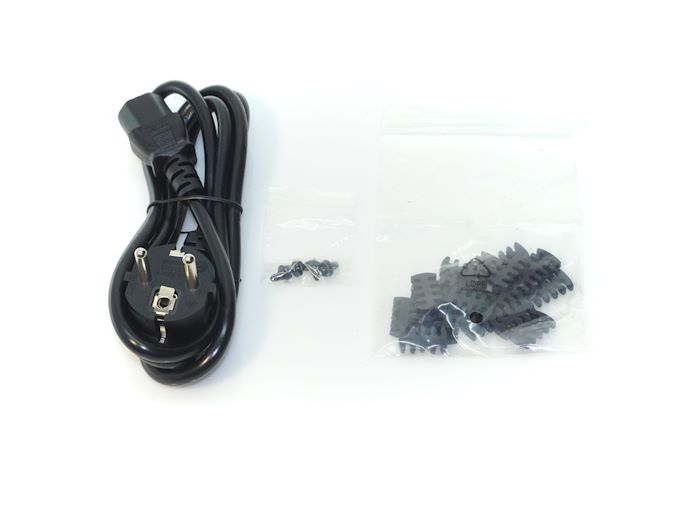
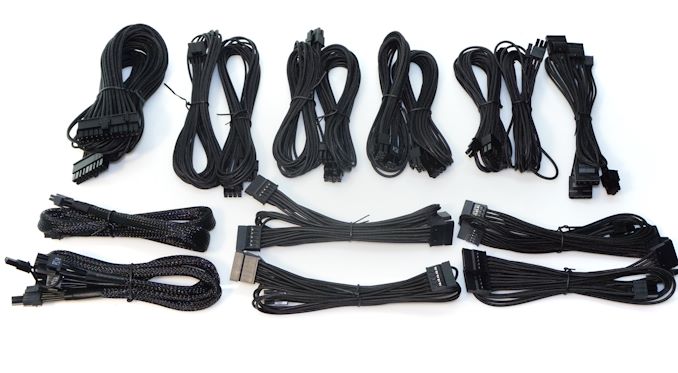
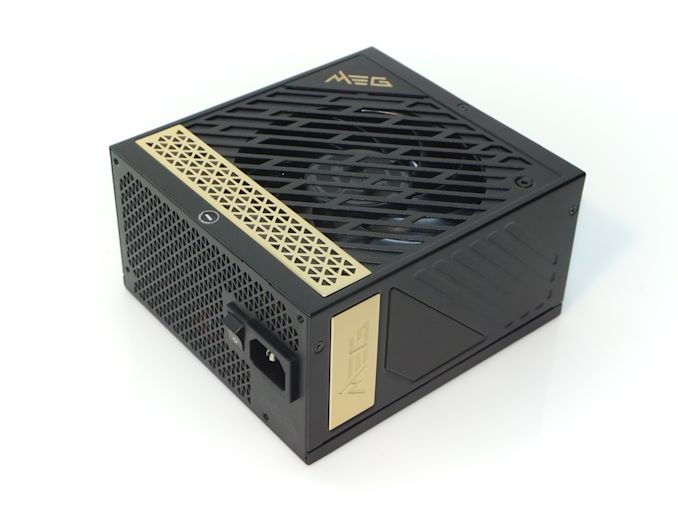
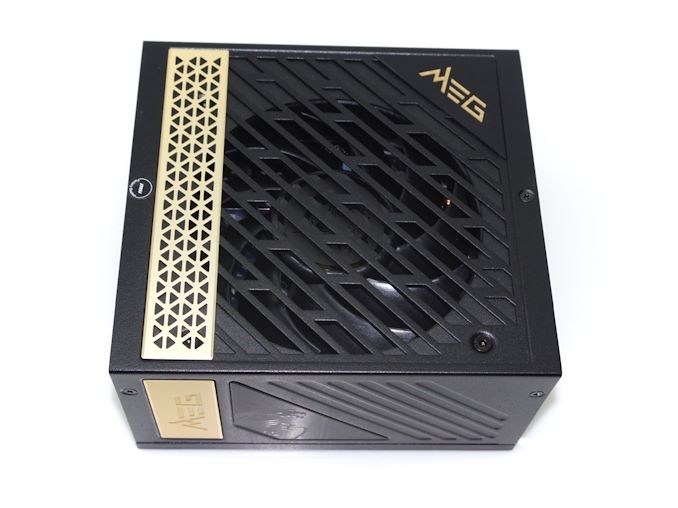
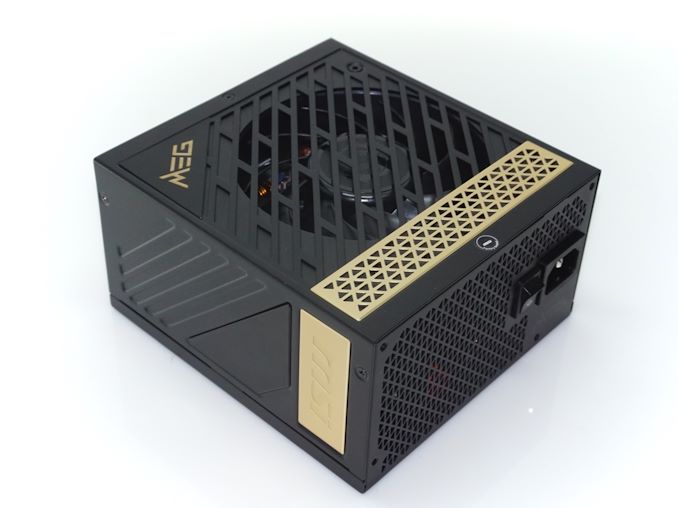
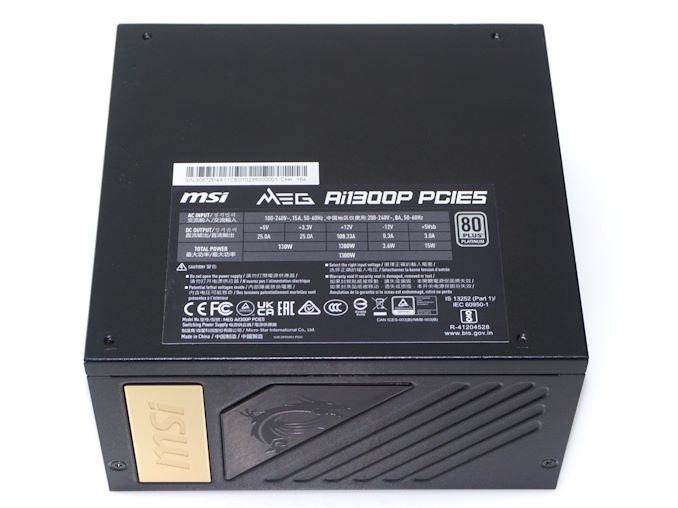
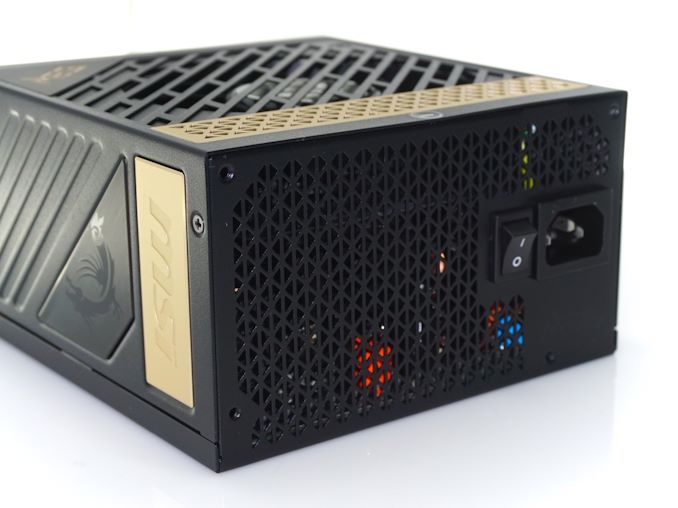
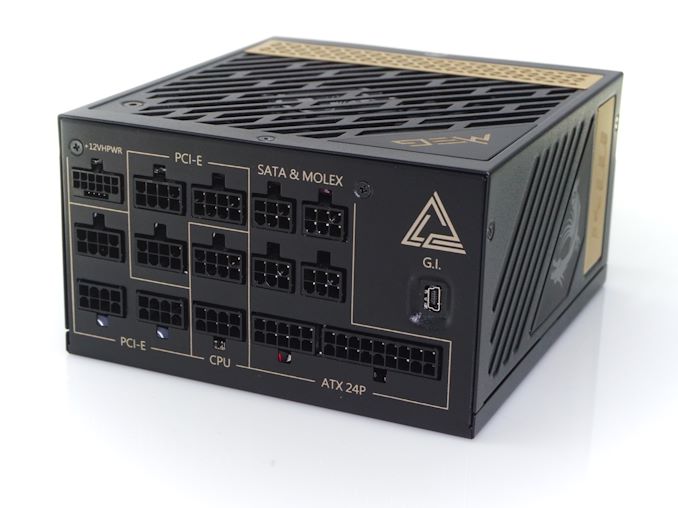


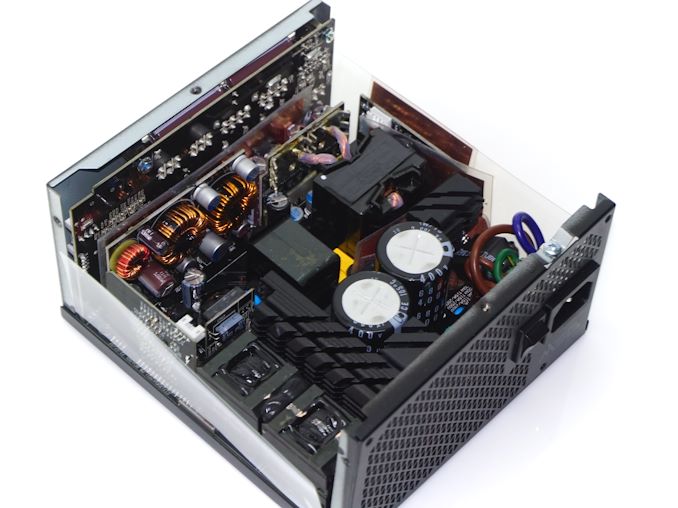


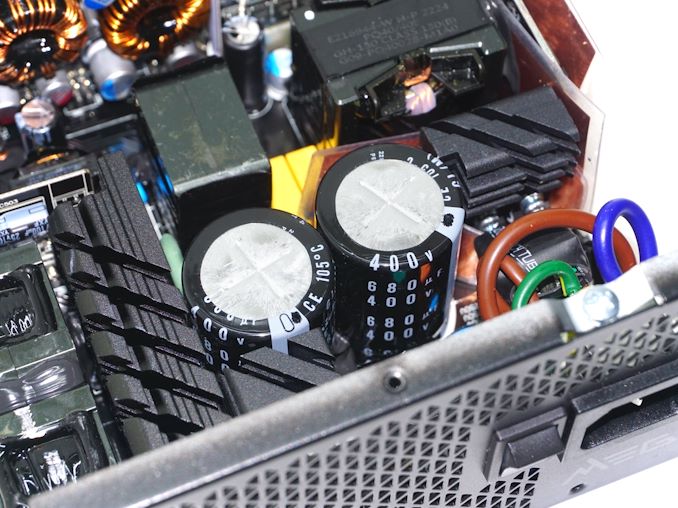

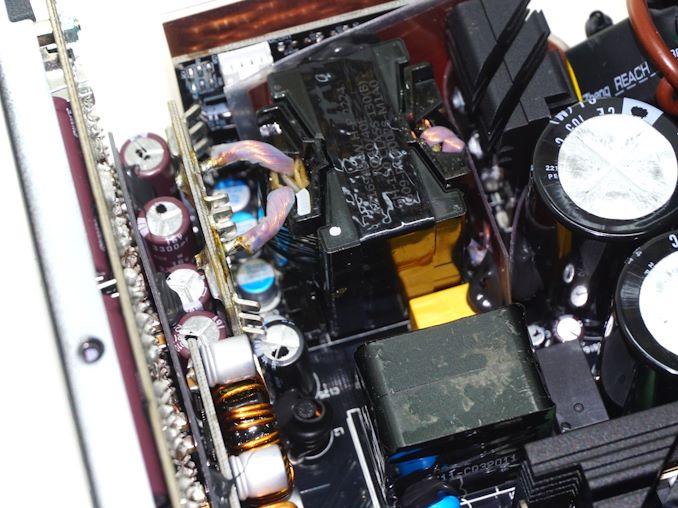








67 Comments
View All Comments
flyingpants265 - Wednesday, December 14, 2022 - link
The plug thing is really overblown IMO, it could have happened to anyone. The important thing is1. Did they fix it, and
2. Did they replace people's burnt computers?
The plug should fit better. Larger and longer pins means more contact area... Need better fitment and tolerances to slide in and click properly each time. Also, the sensing pins are probably unnecessary. Just have an optional 450w bios.
TheinsanegamerN - Thursday, December 8, 2022 - link
if you cant tell when its actually plugged in all the way, thats a pretty major issue.None of this is a poroblem with the 8 pin, you notice.....
NextGen_Gamer - Thursday, December 8, 2022 - link
Yeah, I have not seen a 12VHPWR cable personally yet, but from what I have read, it just doesn't seem to "snap" in quite as tight as the current 8-pin PCI-E connectors. Which means even if you know what you are doing as a PC builder, you might not get it fully inserted. I also have to wonder, with the only two GPUs shipping that use being MASSIVE 3-slot and higher than normal height, that maybe NVIDIA should have provided a right-angle connector out of the box. Since because of where the 12VHPR connector is placed, you really have to bend it as it is hitting the side panel immediately. A right-angle connector would alleviate that stress, and might have been able to be inserted fully a lot easier.tamalero - Thursday, December 8, 2022 - link
Just installed my 4090 and I can tell you that you're right. That thing just doesn't snap nor holds itself like the PCIE connectors.I had no idea if it was fully connected or not. and I was worried I would start to bend the connector from the PCB of the card as the connector is very hard to insert.
DanNeely - Friday, December 9, 2022 - link
I don't have one; but from coverage I've seen elsewhere, while the cable doesn't have a satisfying mechanical snap and audible click when inserted a strait pull and wiggle test will quickly dislodge an incompletely inserted cable without disturbing one that is in all the way. It's also recommended to plug power into the card before inserting it into the case so you've got more room to manipulate the wire and to inspect it's insertion.flyingpants265 - Wednesday, December 14, 2022 - link
Cables shouldn't be a thing anymore anyway. Apple's Mac Pro and the stadia devkit don't even use cables at all. Instead of "hiding" them, just eliminate them completely.But yeah, for 600W GPUs, you probably want a right-angle connector.
evilspoons - Thursday, December 8, 2022 - link
Yeah, if you plugged this power supply's 12VHPWR cable in halfway as well I'm sure it would melt just as easily. The root issue is it's not easy to tell if it's latched and the sense signals that detect proper connection can do so without the connector actually latching.Techten - Tuesday, December 13, 2022 - link
I have the 850 Watt version of this PSU, and I had to gently create a curve in the 12VHPWR cable to get it in the RTX 4080 using a Corsair 4000D Airflow. I took my time over 5 minutes creating a soft curve and leaving at least 2 inches out of the card with out bending. The Cable was very stiff. There was a satisfying click sound once placed in the 4080 and you could easily see that it was flush with the female adapter of the card.scottj - Thursday, December 8, 2022 - link
Not sure about the Gaming Intelligence thing, but they could at least use a modern USB connector.shabby - Saturday, December 10, 2022 - link
At least its not a usb-b port 😂